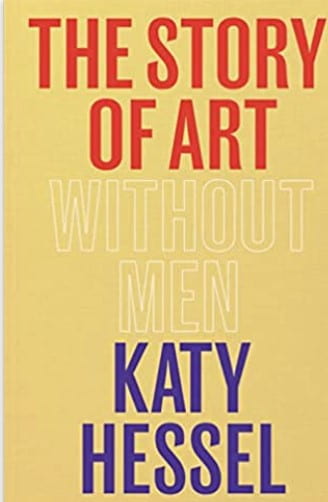I’ll show you what a woman can do
Artemisia Gentileschi 1649
This book tells the story of women in art from the 1500s to present day and was devised as a project on instagram sharing art by women daily in response to an exhibition in 2015 with no female artists represented. God, the wheels move slowly! It takes its name from E. H. Gombrich’s book The Story of Art where in the 1st edition no women were listed and in the 16th edition only 1 was.

The book gives us brief biographies of the art, the times the art was produced in and what the men were doing at that time, particularly if they took the credit. There must always be a tension in books such as these where you want to know about the people but you also want to see the art. Here the words won, because that is the purpose of the book, and the art that is shown is small and really, I wanted to see it much larger so that I could study it in more detail.
I was struck by the number of artists that died early particularly up until the 20th century. Time and again they committed suicide or died during childbirth and this is one of the many reasons why they have been able to be forgotten: there just wasn’t the body of work for each woman that you can accumulate if you die at the age of 26 that you can if you were 96. However, many of the reasons why these women have not been mentioned are far more mundane. Art was for men, women weren’t even allowed to study for a long time, particularly in the ‘live’ classes and so had to have money to find other ways to learn.
There were several works that I really enjoyed. The first was Edrita Fried, 1981, by Joan Mitchell consisting of four enormous panels which are almost 8 metres long.

The brush strokes are so exhuberant and I love the colours, the ochre as it starts to appear before it grows into its own and that slightly violet colour peeping through here and there. Mitchell was inspired by Monet’s Waterlillies and it shows in this painting. Edrita Fried was a psychoanalyst who died in 1981 and this is Mitchell remembering her. It looks like the ochre is pushing and struggling to emerge over the first three panels until it bursts through in a yellowy-orange flame but not completely filling the panel.
The second set of work that I enjoyed was by Guerilla Girls, an all-female, anonymous activist group formed after MoMA listed 17 women and 8 artists of colour out of 169 in their International Survey of Recent Painting and Sculpture in 1985. One assumes the survey was undertaken by men who visited their friends.

Their poster art naming and shaming museums and galleries about the number of women artists they represent is witty and straight to the point, with this one asking us all to engage in calling out those who are not upholding fairness and equity. The work is accessible and has been shown in its own right.
But I also enjoyed the textiles chapter where the Gee’s Bend quilts were mentioned. Gee’s Bend, Alabama, is a small, hard-to-get-to community alongside the river Alabama where the women worked together to produce quilts, as they always have. Because the place was relatively in accessible, the quilts retained the essence of the place they were created in and were quite distinct from other styles across America. Many of the quilt makers can trace their ancestry back to the enslaved people from the Pettway Plantation.

I love the slightly wonky look from the way they were made, using materials that were around and are more representative than might first appear. Whilst there are elements of traditional quilting, these are made in a much freer way. This quilt represents a map of the local community as shown by the big block at the top representing the plantation house with the four field worker’s cabins underneath and the river shown by the strips. The other side of the quilt shows the strips of fields and their different crops and it looks like each of the cabins is constructed differently. So this quilt is a map of the local community, not a scrappy quilt where the maker ran out of blocks to complete it.
The book was extremely readable and provides a jumping off point for discovering female artists you may never have heard of, writing them back into history.